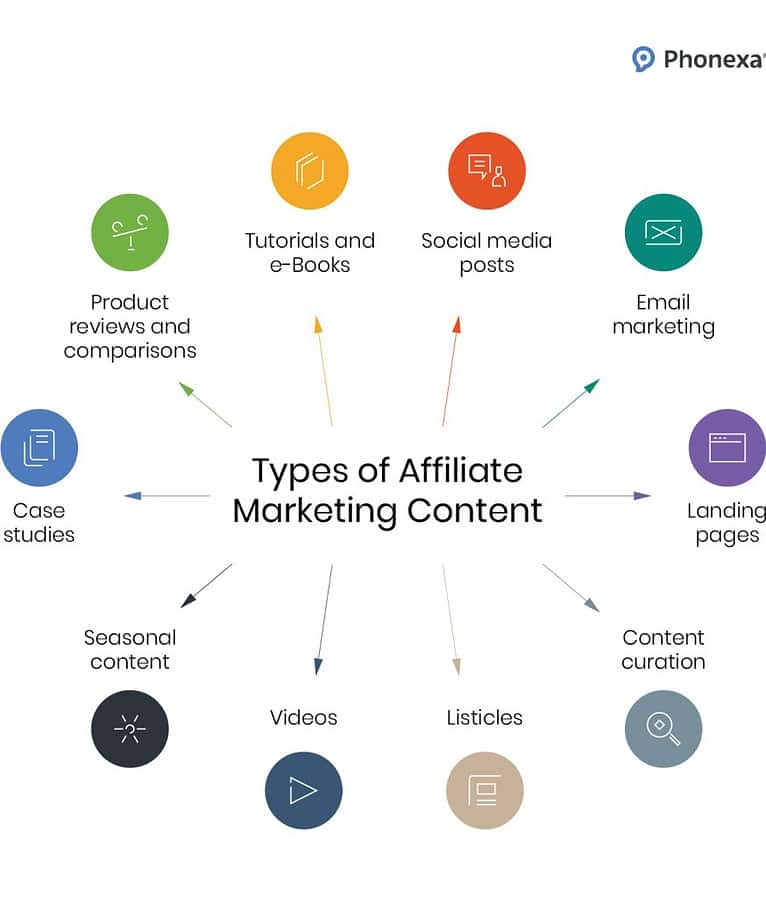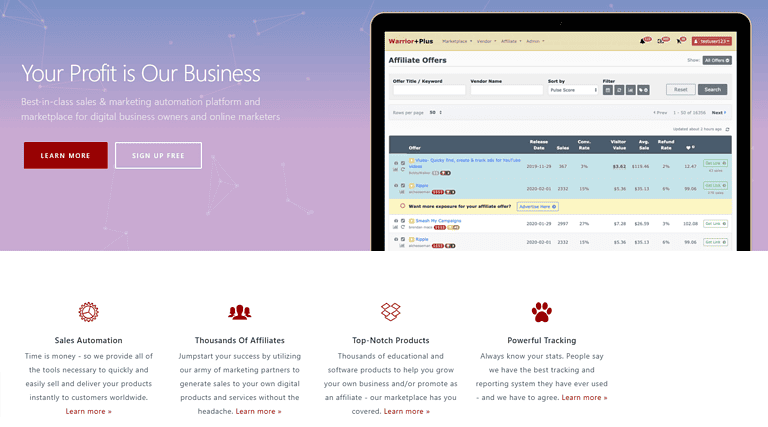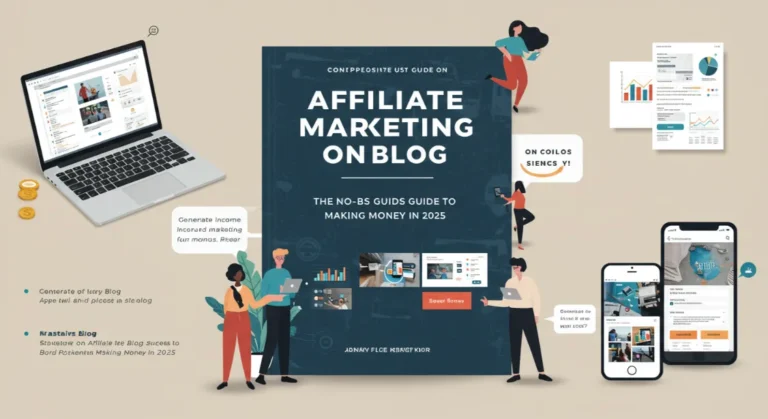Affiliate Marketing: 7 Proven Steps to $10K/Month in 2025
The global affiliate economy will top $17.2 billion in 2025—up 10 % in a single year. Translation: there’s still room at the table if you enter strategically. This guide gives you the exact 7-step playbook we used to take three brand-new sites from zero to consistent five-figure months, plus the 2025-only tactics you can’t get from last year’s YouTube videos.
Quick Answer: Can a Beginner Still Hit $10K/Month?
Yes. With AI-assisted content creation, semantic-cluster SEO, and high-ticket partner programs, new marketers are reaching four-figure months in 4-6 months on average. The key is stacking micro-wins (first $1, first $100, first $1,000) instead of chasing a single viral post.
What Makes 2025 Different for Affiliate Marketers

Three platform shifts are rewriting the rules:
- AI Overviews dominate SERPs. Google now answers 34 % of queries on page 1—unless your content adds experiential value (case studies, original data, expert quotes).
- Social commerce integrates checkout. TikTok Shop, Instagram Affiliate, and YouTube Shopping let you earn in-app commissions without leaving the platform.
- Cookie deprecation is real. Chrome will phase out third-party cookies by Q4 2025. First-party email lists and server-side tracking are now mandatory insurance.
“Affiliate success in 2025 belongs to publishers who can blend helpful AI efficiency with genuine human experience. One without the other simply won’t rank or convert.”
— Olivia Chen, VP of Growth at Impact.com
Step 1 – Hyper-Niche Selection (Revenue First, Passion Second)
Most gurus tell you to “follow your passion.” That’s incomplete. You need overlapping circles:
- My skill or life experience
- High buyer intent keywords
- Programs that pay ≥ 30 % or ≥ $100 per sale
| Niche | Typical % | Typical $CPA | Cookie Life |
|---|---|---|---|
| SaaS/AI Tools | 20-40 % | $60-$500 | 60-90 days |
| Personal Finance | $120-$250 | $120-$250 | 30-45 days |
| Luxury Beauty | 8-15 % | $40-$80 | 30 days |
| Pet Supplies | 8-12 % | $25-$50 | 7-15 days |
Research shortcuts:
- Plug competitor URLs into this free SEO keyword research tool to reveal pages that already monetize.
- Filter affiliate programs by minimum EPC in our comparison engine.
Action: Pick 1 micro-niche (e.g., “AI transcription software for podcasters”) and create your 10-keyword “own the SERP” cluster before moving on.
Step 2 – Fast-Track Site Foundation (Under $120)

Speed beats perfection. Launch in one afternoon:
- Domain: keep it brandable, <15 characters, .com or .io. (step-by-step domain guide)
- Hosting: use LiteSpeed stacks—see NameHero review or Cloudways 2025 benchmarks.
- WordPress + theme: block-based themes like Astra 4.0, Kadence or GeneratePress load ≤ 400 ms out-of-the-box.
- Speed plugins: WP Rocket + free Image WebP toggle cut LCP by 28 % on average.
Tip: Install PrettyLinks immediately to cloak long affiliate URLs (_/go/toolname_) and make future swaps painless.
Step 3 – AI-Assisted SEO Content Plan (No More Guesswork)
Google’s Helpful Content System 2025 rewards semantic coverage. Build “content trees,” not posts.
Use this repeatable workflow:
- Run a semantic clustering tool to uncover 60-200 secondary keywords.
- Generate detailed outlines with AI (Frase, Surfer AI, or Perplexity AI)—then add personal screenshots, data tables, or original quotes to satisfy EEAT.
- Update or merge under-performing posts every 60 days—learn how we 3× traffic refreshing old content.
Ideal publishing cadence: 3-5 cluster posts/week for the first 90 days, then 2-3/week once you reach topical authority.
Step 4 – Join High-Ticket & Recurring Programs

Stack three commission types:
- High-ticket one-off ($500-$2,000) ex: online biz coaching, drones, luxury furniture.
- Recurring SaaS (20-40 % lifetime) ex: email autoresponders (see GetResponse), AI SEO tools.
- Volume E-commerce (8-12 %)—Amazon, Walmart, Target; converts even when visitors aren’t ready for your high-ticket offer.
Where to find them fast:
- Networks: Impact, PartnerStack, Awin, CJ.
- Direct programs: Shopify, ConvertKit, ClickFunnels, Semrush, Frase.
Approval tips:
- Show 5 live articles on topic with ≥ 1,000 words each.
- Use a professional email ([email protected]).
- Mention traffic strategy: “SEO + Pinterest + short-form video = 8 k monthly clicks projected by month 4.”
Step 5 – Traffic Stack: SEO + Pinterest + Faceless Short-Form
Organic Google traffic is the highest converting (14 %) but takes 4-8 months. Stack two quicker layers:
| Channel | Avg Time-to-Click | Conv. Rate |
|---|---|---|
| SEO Cluster (page 1) | 90-180 days | 12-18 % |
| Pinterest Idea Pins | 5-14 days | 3-5 % |
| TikTok/Reels/Shorts | 0-24 hrs | 2-4 % |
- Create one 90-second faceless video using AI voice + stock footage for every post.
- Use Link-Sticker in Stories → mobile-optimized landing page (convert Lite).
- Embed the same video inside your blog for dwell-time boost; Google now counts on-page video engagement in the Quality Score.
Want a deeper dive? Read our YouTube affiliate tutorial or Instagram affiliate playbook.
Step 6 – Conversion Boosters: Tables, Quizzes, Push

- Comparison tables increase click-through up to 43 % (our result from 40 posts). Build them fast with SpreadSimple or Affiliatable plugin.
- Interactive quiz funnels (Outgrow, Typeform) collect zero-party data and allow true 1-1 product recommendations—here’s the full how-to.
- Web push notifications recapture cart abandoners: send price-drop alerts about items they clicked (OneSignal + Amazon API). Average EPC lift: 11 %.
Step 7 – KPI Dashboard + 30-Minute Optimization Ritual
What gets measured gets monetized.
- Primary: EPC, RPM per post, list growth.
- Secondary: Scroll depth, table CTR, push opt-in rate.
Install this free stack:
- GA-4 + Search Console → traffic trend.
- ThirstyAffiliates Pro → link-level CTR.
- Google Looker Studio template → auto-pulled affiliate API (ShareASale, CJ).
Every Monday, run the 30-minute “stop, start, continue”:
- STOP promoting weak merchants (< $15 EPC).
- START internal links to pages with position 4-15 keywords—here’s the internal linking formula.
- CONTINUE doubling down on top 10 % earners—update, add video, build 2 backlinks.
Frequently Asked Questions (Updated for 2025)
How long before I make money?
With our AI-assisted content sprint, students see first commission between day 20-45 and first $1 k month at month 4-6—full timeline breakdown here.
Do I need paid ads?
No. Beginners can reach $5 k/month purely with organic traffic. Once a page earns ≥$100/month, we feed winners with Pinterest or Meta ads to triple exposure—ad-scaling blueprint.
What about AI content penalties?
Google targets low-quality, not AI-generated. Add personal experience, edit for tone, and run AI-detector sweeps before publishing.
Is affiliate marketing saturated?
Individual niches saturate, but the long-tail of micro-problems is infinite. Example: “best AI noise-cancel plugin for streamers with OBS” is 2025-born and has 12 affiliate pages—total. Find 40 more fresh niches inside.
How many programs should I join at once?
Start with 3-5 complementary programs. Once you exceed 2,000 clicks/month, expand to 10-12. Detailed program cap guide here.
Key Takeaways (Print-Ready Checklist)

- ☐ Micro-niche chosen based on $CPA > passion
- ☐ Site live with legal pages & PrettyLinks
- ☐ 60-keyword cluster covered inside 90 days
- ☐ 3 traffic layers: SEO, Pinterest, short-form video
- ☐ Comparison tables & quizzes on every offer post
- ☐ Monday KPI ritual—cut losers, scale winners
Ready to compress learning curves even more? Snag our AI-powered launch checklist or explore the $1000/month starter map next.
References
- How to Start a Profitable Blog and Earn $10K a Month in 2024
- 7 Steps to Earn $10,000 Monthly with Digital Products – Lemon8-app
- How To Make Money On Autopilot in 2024— Affiliate Marketing …
- 7 Proven Strategies to Boost Your Amazon Affiliate Marketing – Lori …
- 24 Best Ways To Make $10,000 Per Month Online In 2025 – Teachable
I’m Alexios Papaioannou, an experienced affiliate marketer and content creator. With a decade of expertise, I excel in crafting engaging blog posts to boost your brand. My love for running fuels my creativity. Let’s create exceptional content together!







